Three of us fanned out across an idyllic leeward bonefish flat situated on the southern end of Long Island, one of the many “family islands” of the Bahamas. For each of us, it had been some time since we’d stalked and cast to wily bones, and it felt good to shake the rust off.
Truth be told, we were all just glad to be back “out there.” It had been at least 3 years since any of us had walked a flat. We’d all passed our pre-trip tests; each of us had been poked twice with needles, and we’d crossed the country wearing face coverings to arrive at Dead Man’s Cay and pick up the trusty old Honda SUV we’d rented for the week. I got behind the wheel of the drab, gray vehicle to continuous reminders that “You drive on the left side of the road here,” and I felt like a teenager who’d just been given the keys to the family sedan for the first time.
Before we even got to the lodge, we stopped at the “airport bar,” a sweet little dive, to preview the Kaliks we’d be drinking all week, and took it all in. Here we were on a remote tropical island surrounded by bonefish flats and we had a week to enjoy it. Beer bottles clinked together, smiles broadened and optimism abounded. A week. Warm weather. Sunshine. Bonefish.
“We’ll have another beer,” I said to the smiling gal behind the bar who seemed just as happy to see us as we clearly were to see her.
I had the good fortune to be walking our first flat with Nevin “Pinky” Knowles, the proprietor of the Long Island Bonefishing Lodge. Pinky’s not really a guide — the lodge’s whole intent is to simply provide assistance to do-it-yourselfers like us — but given that it had been a few years since I’d cast to bones, it was nice to have a reassuring voice in my ear.
The first morning started slowly. We saw a few fish, but they always seemed to be “going away,” or, when one of us would lift a rod to make a cast, they’d scatter like roaches when the lights flip on. Eventually, a legitimate shot came — a small school of sizable fish were headed at me, and Pinky saw them first. I made a quick backcast and let loose a decent cast — the size 6 Pink Puff plopped into the water a good 10 feet ahead of the cruising fish and directly in their path.
“Wait,” Pinky said. “Wait.”
The fish kept coming, in no hurry, but always faster than you think. They got closer, and Pinky touched my shoulder.
“Strip,” he said. I gave the fly line a tug, and the lead fish charged the fly.
“Strip,” Pinky said again. Another tug. And then it was on. A quick strip-set, a slow lift of the rod, and I was connected to five pounds of Bahamian treasure. And for a trout angler from the Rockies, there really is nothing like hooking a bonefish.
Immediately, the big bone tore off onto the flat, pulling line with it. I tried to let it take the line it wanted — I had more fly line out than I needed — so I was steering the spare line through the first stripping guide in order to get the fish on the reel. Then, what was left of the outgoing line flipped and wrapped around the fighting butt of the 8-weight. I desperately moved to clear the line, but I knew I was too late. I felt the line go slack, and I knew that the 12-pound leader had snapped.
It was the first in a series of refresher lessons that each of us had to relearn over the course of the next week. We earned the fish we brought to hand and we put in the time to catch each one. By the end of the week, each of us was reliving our successes and counting our missed opportunities. And we knew that if our execution had been better, we could have been doing quite a bit more celebrating.
If you’re considering a flats trip in the near future (and vaccinated Americans — who can prove it — are now welcome to the Bahamas without a health visa) and you need to bone up (pun intended) on your spot-and-stalk fishing, consider this your chance to “go to school” on our mistakes.
Keep your hands apart when clearing line
This would have no doubt helped me land that first bonefish of the trip. After the strip-set and the hook up, I should have cleared the line well away from the rod butt with my left hand while I worked to keep the rod at a shock-absorbing angle with my right hand. Any line flips would have been harmless if I had just cleared the line. The good news? It’s a lesson I’ve learned before, and I didn’t need the reminder again for the rest of the week.
Check your knots
I think each of us lost at least one fish over the course of the week due to knots we tied with our attention more tuned into the flats we were about to fish than on the knots themselves. When a break-off occurs, and you see a little curly-cue at the end of your line where your fly used to be, you know that the break-off happened due to knot failure. And that’s on you.
Bury your fly
Bonefish are wary critters by nature, and it’s a good idea to eliminate all the challenges that you can control. I am pretty conscious of the color of my attire so as to limit any dramatic silhouettes. I also try and get low when a fish is on a path to intercept my fly to reduce any shadows I might be casting. But, as Capt. Markk Cartwright reminded me, bonefish have great senses of smell.
“Before you make your first cast, bury your fly in the mud,” he said. That removes or reduces the odors associated with the fly’s construction. Think about it. Thread, tinsel, plastic and feathers … they all have their own odors. And, of course, head cement and UV resins have scents, too.
As Markk noted, it can make the difference between a hookup and a refusal.
Let it all hang out
Well, not all of it. It being your fly line. But lots of it.
Don’t walk the flats with most of your line still on the spool of your reel. If you do, you’ll find yourself feverishly stripping off line when shots at fish come along. That translates into wasted time and missed shots. Instead, strip off a good chunk of line and let it drift alongside you in the water as you walk the flat. Typically, around 50 feet is good, but don’t hesitate to strip off a bit more. Even if the shot you eventually hook up on is shorter, you can let the fish clear the line by applying just a bit of light pressure (remember to keep those hands separated) and put itself on the reel as it runs.
Point your tip
Imaginary bonefish appear with regularity on the flats. Sometimes, it seems as though the list of bonefish impersonators—fresh feeding marks in the sand, turtle grass, rocks, sun glint, cloud shadows, and so on—on the flats is limitless. If you spy something in the water that you think might be a bonefish, but you’re not sure, point your rod tip at it. Adding the tip of your rod to your field of vision will allow you to determine if the thing you’re seeing is moving or stationary. If it doesn’t move, it’s not a bonefish.
Still not sure? Cast.
When in doubt, cast. The funny thing about bonefish is that you can’t catch the ones you don’t cast to. There’s no harm in casting to a patch of turtle grass, or a stripe of dark sand, or a cloud shadow. In fact, if it’s been a while since you’ve had a real shot at a fish, a practice cast will do you a bit of good. When your eyes prove correct, and that turtle grass or stripe of sand snatches up your fly and starts tearing across the flat, you’ll be glad you tossed out that just-in-case cast.
Footwear matters
I moved recently, and one of the casualties of the cross-town relocation appears to have been my trusty flats booties. I acquired a cheap pair from a local store, and it took about an hour for me to realize that they were just too heavy and oversized. It’s one thing to walk through ankle-deep muck in snug, light-weight booties and another to feel as though you’re lifting a brick out of the mud with every step. Thankfully, my buddy Chad had a spare pair, and I was able to wear them for a day. Unfortunately, I rubbed three sizable blisters on the tops of my toes, which made wearing even better-fitting booties untenable. The last three days of the trip, I waded barefoot on the flats. While I can’t in good conscience say that’s the right call for everybody — rogue sticks, shells and rocks, as well as hidden sting rays, can be problematic — it worked for me. My next flats trip, though, will find me in a pair of perfectly fitted flats booties, and I’ll spend the extra money to make sure that happens.
Keep your expectations in check
One look at the weather for the week ahead of us, and all three of us were over the moon with great expectations. Highs in the low 80s, lows in the 70s. Sunny. The wind was bothersome one afternoon. We had it made.
We had days where we found aggressive bonefish eager to pounce on any offering. There were also days when the bonefish didn’t get the memo, and each of us caught just a fish or two. It served as a reminder that there are far more factors to consider than just the daily highs and lows (wind direction, tide timing, moon phases, and so on). Don’t get discouraged when the fishing slows down. Work harder to remove the obstacles you can control and figure out the puzzle.
Final word
It was nice to be out there again, chasing bones on some of the prettiest flats I’ve ever seen. We celebrated our victories and with every mistake or missed opportunity, we made a point of taking in the lesson. Bonefishing — or any flats fishing, for that matter — is a fly-fishing discipline where a lot of little factors have to come together just so in order to be successful. Nothing compares the screaming run of a big bonefish fooled by a fly — it’s one of the sport’s ultimate experiences.





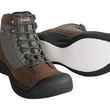











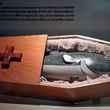
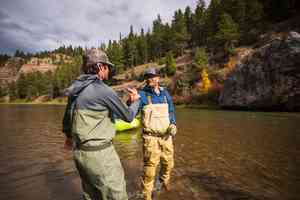


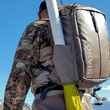
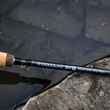








Comments
Kurt replied on Permalink
Great tips! The one thing I would add is going no smaller than #16 pound fluorocarbon tippet. I actually start with #20. You don’t want to play them out otherwise they are easy prey for sharks.
Hector replied on Permalink
Excellent tips !! As a complement to the first tip, I can add that, pressing the fighting butt of your rod against the wrist also avoid that the line wrapped around it.
Craig Dumesnil replied on Permalink
Great article and great tips. Selfishly, I hate for the word to get out about these spectacular flats. Ever the contrarian, I prefer to walk with no more than, say, 30 feet of line. I find that any more than that ultimately gets tangled or I am spending too much time tending the line instead of looking for fish. Just sayin’.
Thomas G Williams replied on Permalink
Great read, thanks. Should be on my first flats trip in September. Can't wait!
Pages